Punctuation Teaching Resources
Teach students how to use punctuation marks in their writing this school year with printable worksheets, fun writing games, instructional slide decks and more primary school teaching resources designed to help extend and help students learn how to punctuate their writing to be more clear and understandable.
Our teacher team has created this extensive collection of teaching resources for teachers like you to teach these important writing tools. Aligned to the Australian curriculum, this grammar collection includes editable worksheets and teaching presentations and more to save you time on lesson planning.
Created by expert teachers, each resource in this punctuation collection has been carefully reviewed and curated by our team. That means it's ready to use in the classroom! You'll even find editable resources, plus differentiated options.
New to teaching this part of the curriculum, or just looking for fresh ways to engage your students? Read on for a primer from our teaching team, including some answers to tricky punctuation questions from kids!
What Is Punctuation? A Kid-Friendly Definition
Teaching punctuation may matter now more than ever as texting and other digital forms of communication become ever more common. So here's a way to explain what punctuation means to your students in a kid-friendly manner with a definition from our teacher team.
Punctuation is a set of marks we use to help make our writing clearer and easier to read.
When we speak, we pause, change our tone of voice or take a breath. Writing is a lot like that, but instead of the quiet that comes when a speaker pauses, punctuation marks are the tools a writer uses to tell readers when to pause.
What Are Punctuation Marks? A Kid-Friendly Definition
The symbols we use for punctuation are called punctuation marks, and there are more than a dozen different ones in English.
Each of these marks or symbols has its own name and important use in writing, but primary students only learn about 14 to 16 as they embark on their early writing adventures.
10 Common Punctuation Marks And How to Use Them Correctly
Let's take a look at some examples of common punctuation marks that students can use in their writing, along with some examples of how they can be used!
Full stop (.)
Sometimes called a period, a full stop looks like a little dot. We use this punctuation mark to end a sentence that is a statement or a command.
- Example: 'My favourite food is pizza.'
Question Mark (?)
The question mark looks like a full stop with a squiggly line on top of it. We use a question mark to end a sentence that is a question.
- Example: 'What is your favourite colour?'

The full stop with a squiggly line on top of it is the symbol for punctuating a question.
Exclamation Point (!)
The exclamation point looks like a full stop with a straight line on top of it. We use an exclamation point to show strong emotion or emphasis.
- Example: 'Our netball team won the game!'

Commas (,)
Commas look like little hooks next to a word in writing. Writers use commas to separate items in a list or to separate clauses in a sentence.
- Examples: 'I need to buy apples, bananas and oranges.' 'After I finish my homework, I will play outside.'
Apostrophe (')
An apostrophe looks like a comma suspended in the air. This symbol can be used in writing to show possession or to shorten a word.
- Example: 'The cat's toy rolled under the table.'
Quotation Mark (')
Quotation marks look just like apostrophes, but they are used differently. This punctuation mark is used to show that someone is speaking or to show the title of a book or movie.
Example: 'I'm hungry,' the girl said to the boy.
Colon (:)
The punctuation mark symbolised by two dots on top of one another is the colon. Writers can use a colon to introduce a list or an explanation.
- Example: 'I need three things for my science experiment: a battery, a wire and a nail.'
Semicolon (;)
The semicolon looks like a comma with a dot on top. This symbol is used to separate two closely related independent clauses.
- Example: 'I like playing soccer; my brother prefers netball.'
Round Brackets ()
Also called parentheses, round brackets are used to set off additional information within a sentence.
- Example: 'My dog (Max) loves to play fetch.'
Hyphen (-)
Represented by a short line, writers use a hyphen to connect two words to make a compound word or to separate syllables at the end of a line.
- Example: 'short-sleeved shirt'
Confusing Punctuation Rules Explained for Kids
Some punctuation rules are straightforward and relatively easy, but others can get complicated — even for the most attentive students. Here are some of the rules that tend to trip up students!
Does Punctuation Go Inside Brackets?
This is a tricky one for students because there is no tried and true answer! The rule comes down to context and the punctuation mark used.
Whether punctuation goes inside or outside parentheses depends on the context and the type of punctuation.
- When Punctuation Goes Inside the Bracket — Commas, full stops and other punctuation marks generally go inside when they are part of the sentence within the parentheses.
- When Punctuation Goes Outside the Bracket — Punctuation marks go outside when they are part of the sentence outside the brackets. For example, when brackets are used at the end of a sentence, the full stop (if there is one) goes outside the brackets.
- Plus Plan
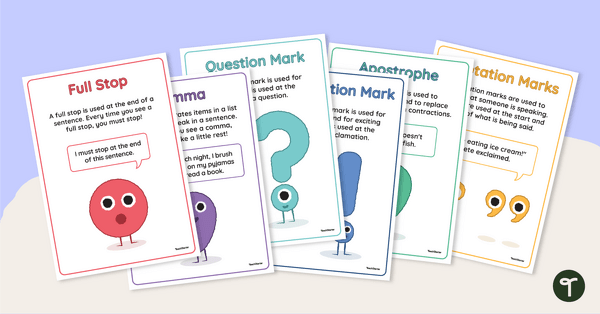
Punctuation Poster Pack
Display this set of 6 punctuation posters in your classroom to remind your students of the most common punctuation marks and their uses.
- Free Plan
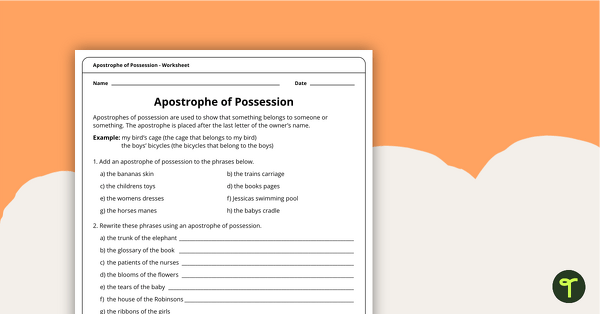
Apostrophe of Possession Worksheet
A 2 page worksheet to help students consolidate their understanding of the apostrophe of possession.
- Free Plan
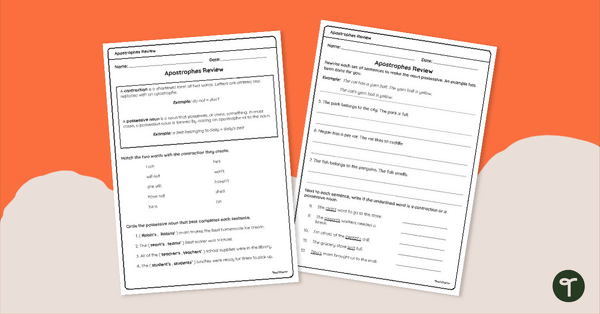
Apostrophe Review Worksheet
Practise using apostrophes with contractions and possessive nouns in this double-sided worksheet.
- Plus Plan
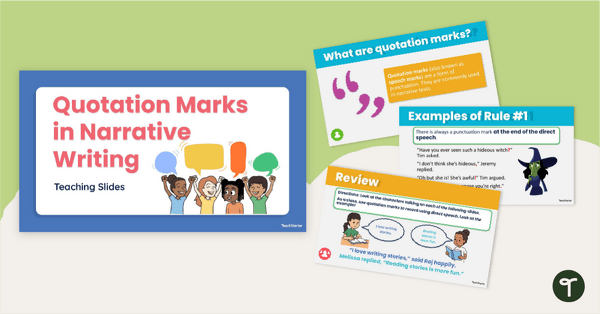
Using Quotation Marks in Narrative Writing PowerPoint
Teach the correct usage of quotation marks in narrative writing with this set of teaching slides.
- Plus Plan
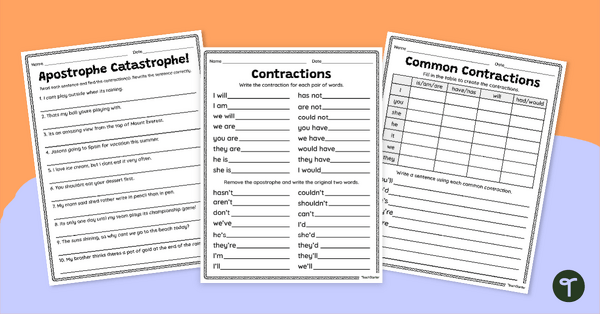
Apostrophes of Contraction Worksheets
Learn about the apostrophe of contractions with this set of worksheets.
- Plus Plan
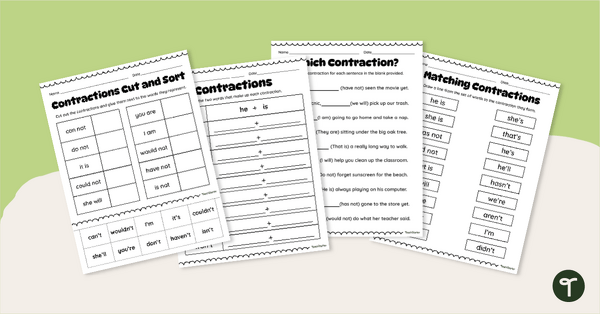
Contractions Worksheet Pack
Help students learn more about contractions with this contraction worksheet pack.
- Plus Plan
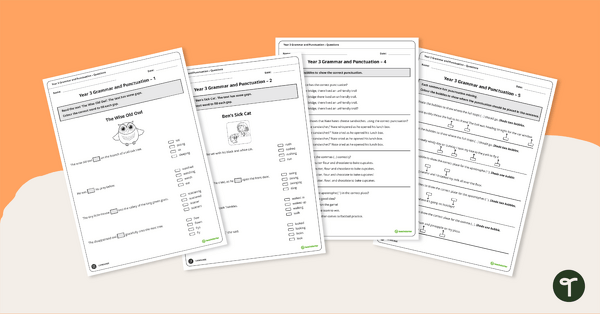
Grammar and Punctuation Assessment Tool – Year 3
A set of 5 grammar and punctuation assessment tools suited to Year 3 students.
- Free Plan
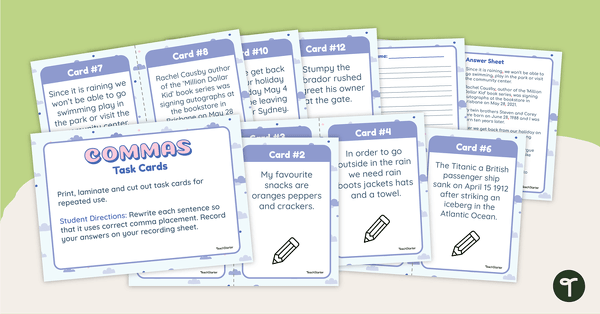
Comma Task Cards
- Plus Plan
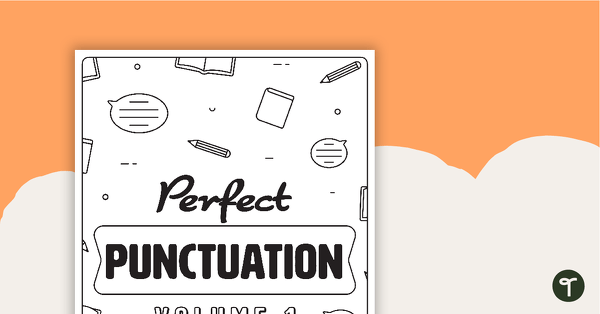
Perfect Punctuation Volume 1 – Worksheet Book
A workbook packed with 50 punctuation activities for use in the classroom.
- Plus Plan
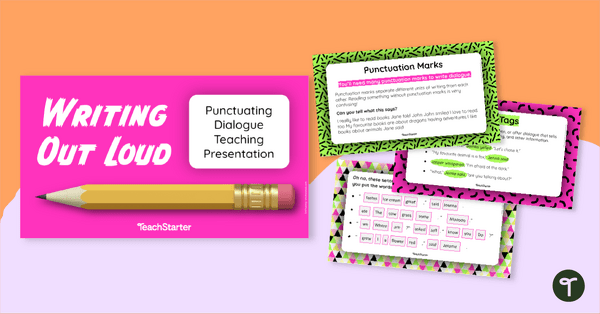
How to Write Dialogue - PowerPoint Teaching Slides
Teach your students how to write dialogue using double quotation marks with an interactive teaching presentation.
- Plus Plan
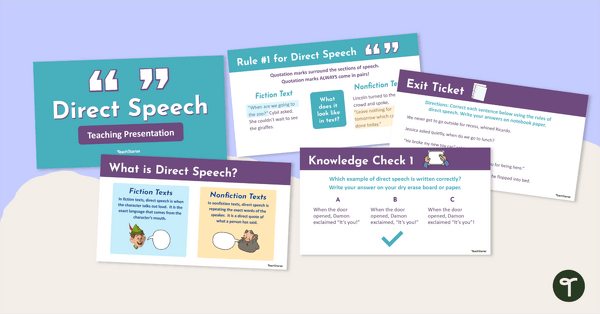
Direct Speech - Teaching Presentation
Teach the rules of punctuating direct speech using double quotation marks with an interactive teaching presentation.
- Free Plan
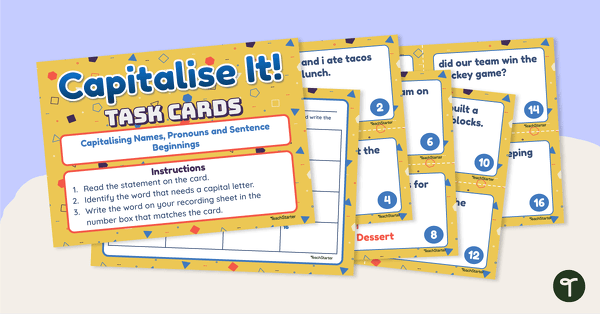
Capitalise It! Task Cards
Reinforce capitalisation of proper nouns, the pronoun ‘I’ and the beginning of sentences with this set of task cards.
- Free Plan
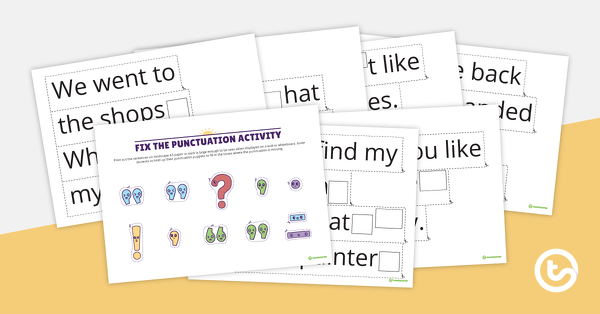
Fix the Punctuation Activity
A cut and match activity to help your students correctly punctuate sentences.
- Plus Plan
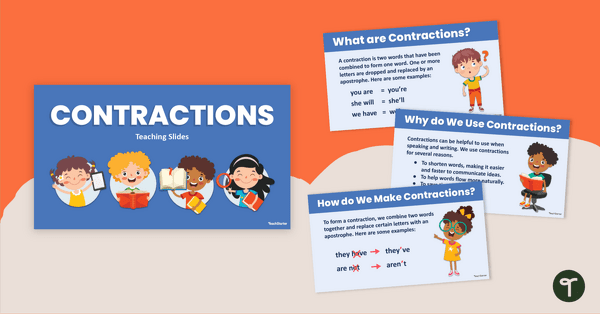
Introduction to Contractions Teaching Slides
Teach students about contractions with this engaging set of teaching slides.
- Plus Plan
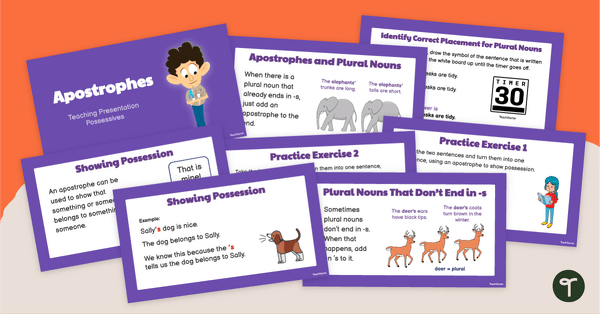
Apostrophes of Possession Teaching Presentation
Teach your students to use the correct forms of possessive nouns with an interactive teaching presentation.
- Plus Plan
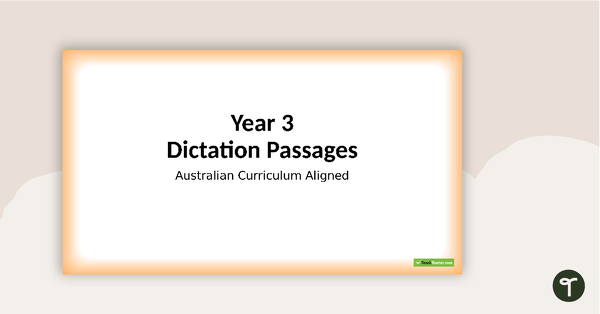
Dictation Passages PowerPoint - Year 3
A 22 slide editable PowerPoint Template which can be used for a range of dictation activities.
- Plus Plan

Everyday Grammar Punctuation Warm Ups - Upper Years Interactive PowerPoint
An engaging 44 slide interactive PowerPoint to use in the upper years classroom when learning about grammar and punctuation.
- Plus Plan
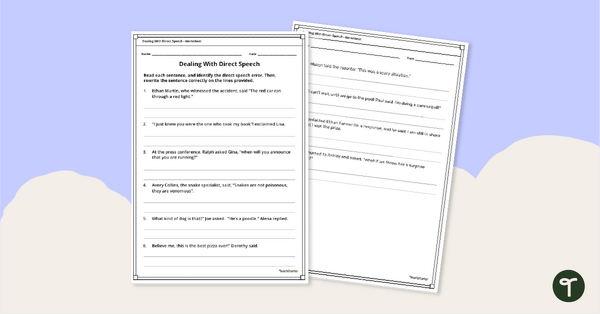
Dealing With Direct Speech - Worksheet
Use this worksheet when teaching students the rules for punctuating direct speech using double quotation marks.
- Free Plan
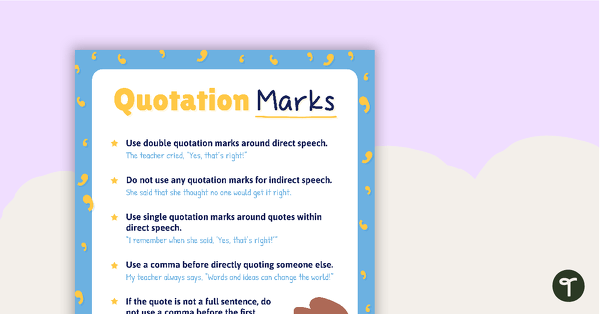
Quotation Marks Poster
A poster highlighting the correct use of quotation marks and punctuation for direct speech.
- Plus Plan
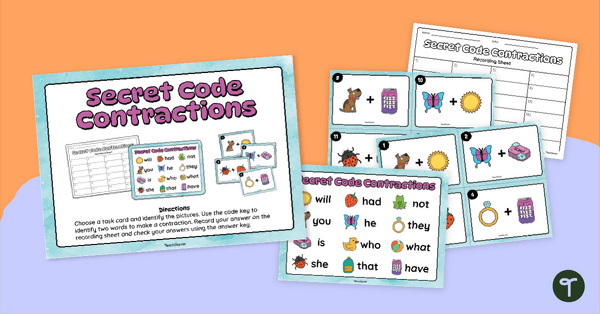
Secret Code Contractions Activity
Explore contractions and decode the secret code with this fun secret code activity.
- Plus Plan
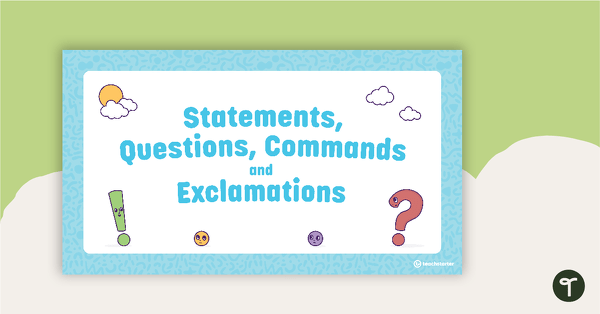
Statement, Question, Command, Exclamation PowerPoint
A 14-slide editable PowerPoint template that introduces the attributes of statements, questions, commands and exclamations.
- Plus Plan

Capital Letter and Full Stop Scavenger Hunt Worksheet
A reading passage and 2 engaging worksheets that explore the importance of capital letters and full stops.
- Plus Plan
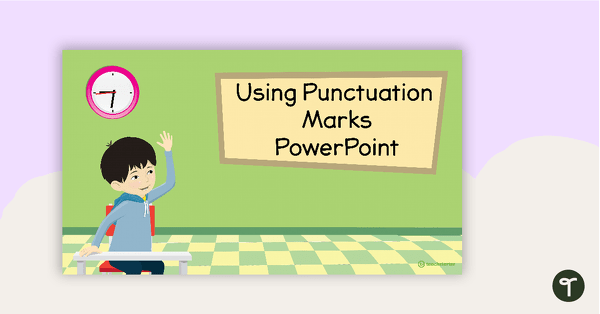
Using Punctuation Marks PowerPoint
A 29 slide editable PowerPoint template to be used when teaching the correct usage of punctuation.
- Plus Plan
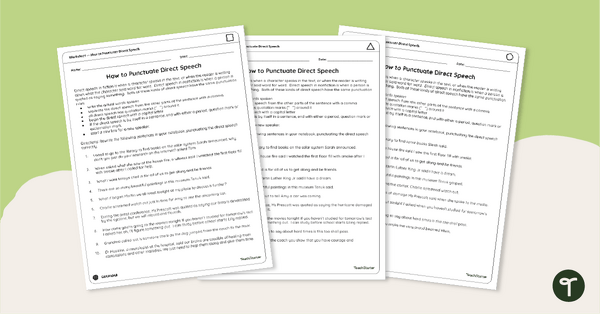
How to Punctuate Dialogue Worksheets
Reinforce understanding of how to punctuate dialogue using double quotation marks with differentiated worksheets.
- Plus Plan
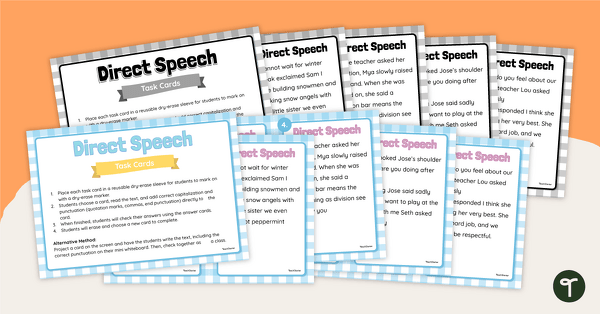
Using Speech Marks in Direct Speech Task Cards
Practise adding double quotation marks to direct speech with printable quotation mark task cards.
- Plus Plan
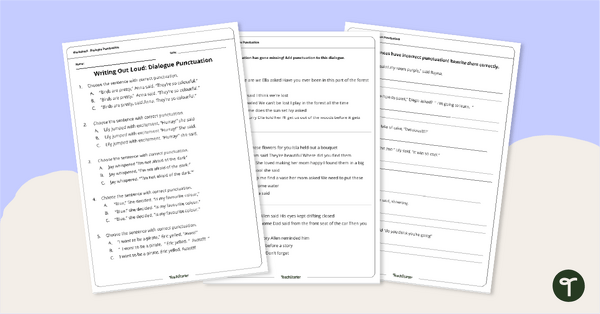
Writing Out Loud: Dialogue Punctuation Worksheet
Practise using double quotation marks in writing with a Punctuating Dialogue worksheet.
- Plus Plan

Statement, Question, Command, Exclamation – Cut and Paste Worksheet
Identify statement, command, question, and exclamation sentences with a Types of Sentences Cut and Paste worksheet for Year 2.
- Plus Plan
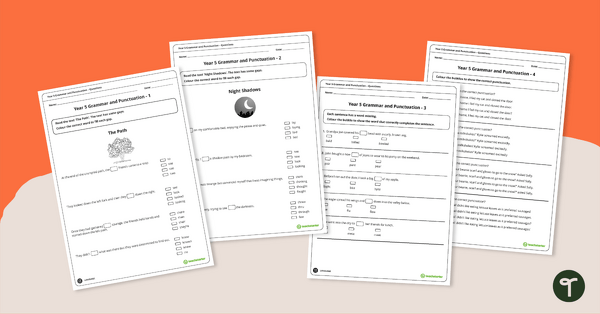
Grammar and Punctuation Assessment Tool - Year 5
A set of 5 grammar and punctuation assessment tools suited to Year 5 students.
- Free Plan
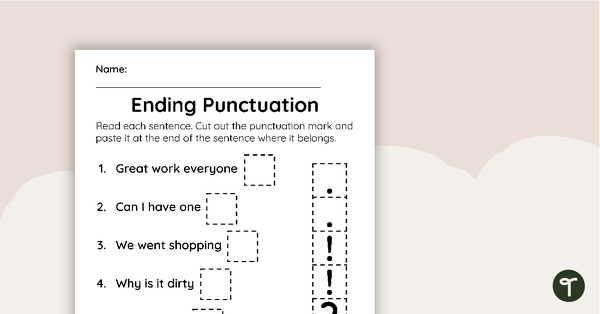
Ending Punctuation – Cut and Paste Worksheet
A cut and paste worksheet to practise adding the correct punctuation marks to the end of sentences.
- Plus Plan
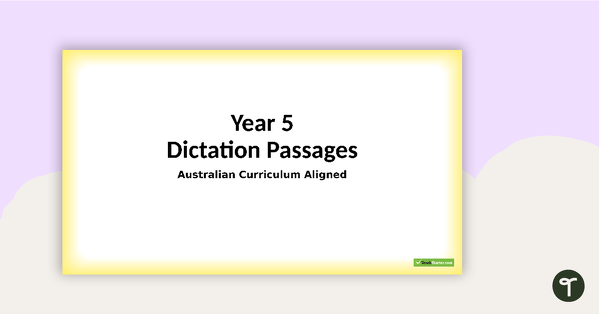
Dictation Passages PowerPoint - Year 5
A 22 slide editable PowerPoint Template which can be used for a range of dictation activities.
- Plus Plan
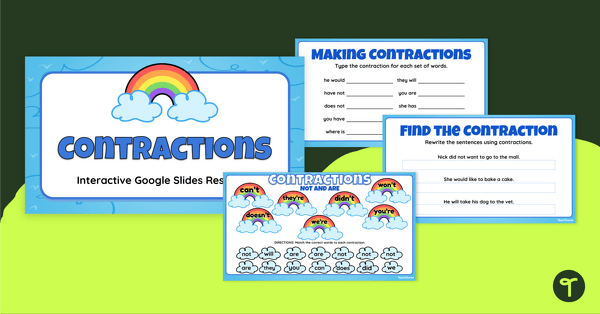
Contractions Interactive Activity
Encourage growth in spelling and writing conventions with a Contractions for Kids Google Interactive.
- Plus Plan
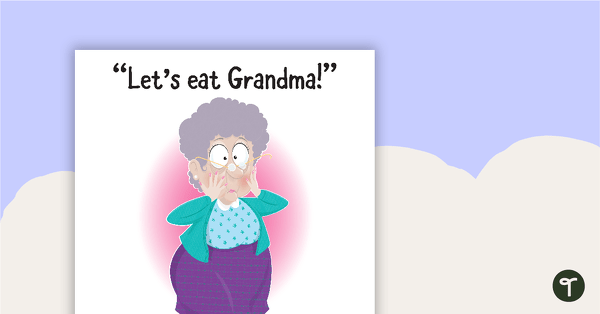
'Let's eat, Grandma!' - Commas Save Lives Poster
A poster highlighting the importance of commas!